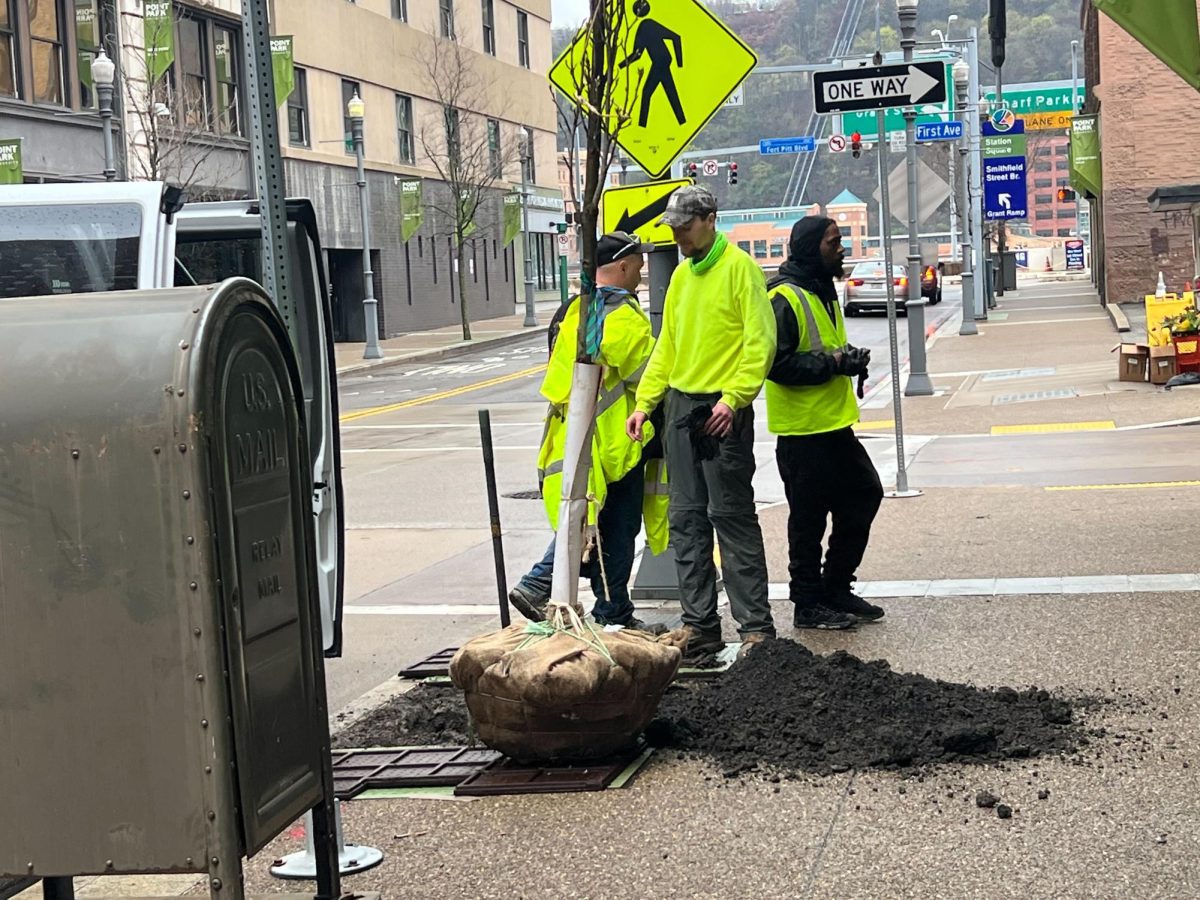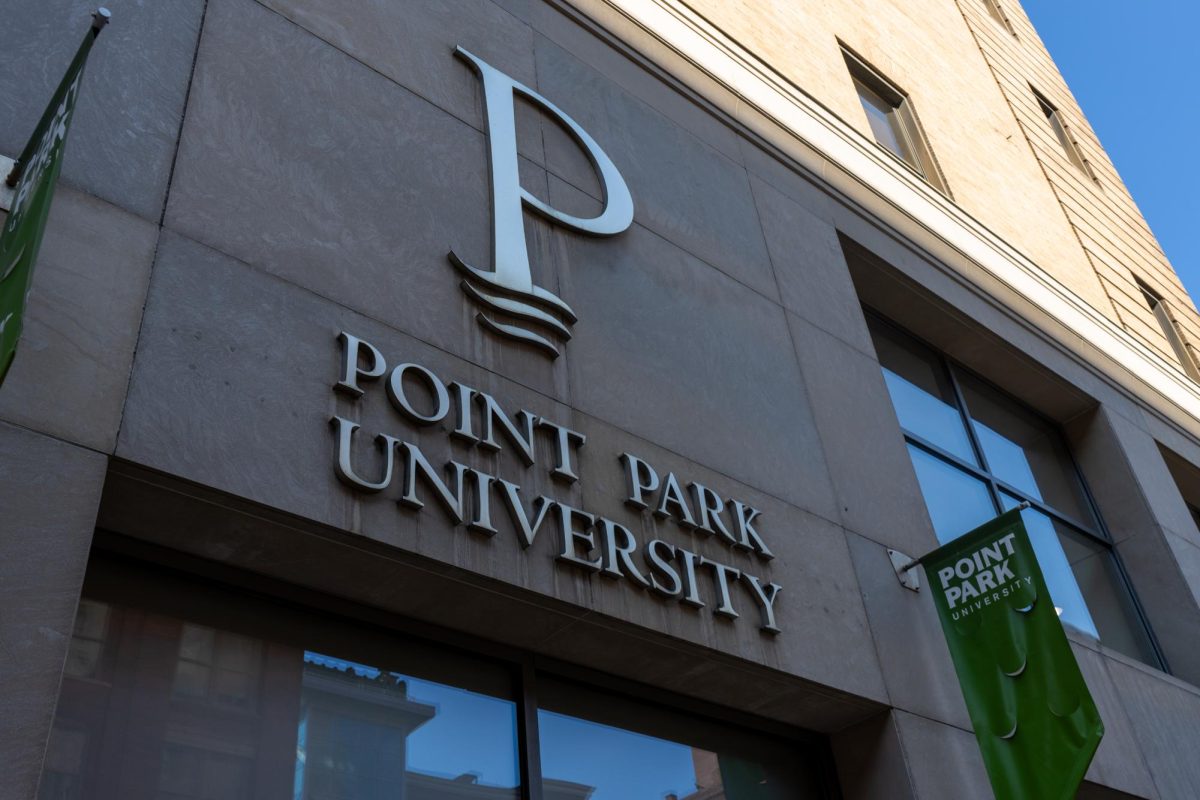Passersby on the fifth floor of Academic Hall may be surprised to learn that behind the painted images of charming green curtains and beige doors labeled “508” are blood-spattered sofas and floors tracked with dirt footprints. The crime scene investigation house, the newest addition to Point Park University’s criminal justice and intelligence studies department and National Security Training Center, is a laboratory facility for students wishing to gain hands-on experience in analyzing evidence and evaluating a crime scene. After nearly five years of brainstorming and three months of construction, the crime scene lab was completed before the start of the fall semester and will be open for classes to use after Sept. 25, which is when Point Park alumni will have the opportunity to tour the lab. When entering the crime scene house, the first thing one sees is a classroom, which seats 16 students, enclosed by a deep red, hospital-like curtain. On the other side of the curtain is a bedroom, living room and office, furnished with items donated by university professors. “This, unlike any other crime scene house, has three separate crime scenes, each independent of each other,” said Gregory Rogers, chair of the criminal justice and intelligence studies department. Within these individualized rooms, students can analyze evidence in a realistic crime setting, and the only difference is that the victims are dummies instead of real bodies. Edward Strimlan, a forensic science professor at Point Park, is looking forward to teaching his class “Introduction to Death Scene” in the crime scene house this semester. In the lab, Strimlan will teach students how to analyze everything from hair follicles to blood spatters. “There is actually simulated blood that can be used for blood spatter analysis. Any kind of evidence you can find in any crime scene anywhere can be reenacted here,” said Strimlan, who is also the chief forensic investigator for Allegheny County’s Office of Medical Examiner, in a phone interview. “I think it is a great first step to developing a fantastic forensic science program at the university. For just starting out, the forensic program to have the only…integrated crime scene [I know of] in a facility is a very big plus for the university.” When asked about his students’ reactions to having class in the crime scene lab, Strimlan said, “They all seem very excited. Most of the time, students, at least that I’ve dealt with, love hands-on experiences. You can learn anything from a book, but to physically walk into a crime scene for the first time…gives students a heads-up.” Kileigh Williams, a sophomore forensic science major, is one student who is excited to put her knowledge of criminal investigations to use in the crime scene investigation room. “I’m pumped. I’m excited just to see [the room],” Williams said. “It’s going to be helpful, but it’s going to be so different. I don’t know of another school that has a house like that.” Although criminal justice and forensics majors will be the primary users of the crime scene lab, Strimlan hopes that other majors will eventually take advantage of the facility as well. “Anybody in legal studies, anybody in theater, anybody in journalism all can participate in something like this,” Strimlan said. “Every aspect of the university could play a part in this.” Like Strimlan, Rogers also hopes to see a convergence of majors in the use of the crime scene lab, especially with the inclusion of Conservatory of Performing Arts (COPA) actors and set designers playing roles in the crime scene. “They have theater, they have actors, they have people who can make this place look like it’s outdoors,” Rogers said. “Imagine being able to work with them and give those students credit for practical things instead of just building the stages.” In addition to other majors potentially using the crime scene lab, members of the community are also showing interest in the facility. In the near future, the lab may be used to host seminars for training police detectives in Allegheny County. Rogers also hopes to eventually develop a student-run research project in the lab as well as a summer “CSI” camp for high school sophomores and juniors interested in learning about the inner workings of the forensics involved in the popular television show. Rogers believes that the crime scene investigation room, as well as the potential summer CSI camp, will help attract more students to Point Park, gain more prestige for the university and also increase the number of criminal justice and intelligence majors, which currently encompasses over 300 students.












